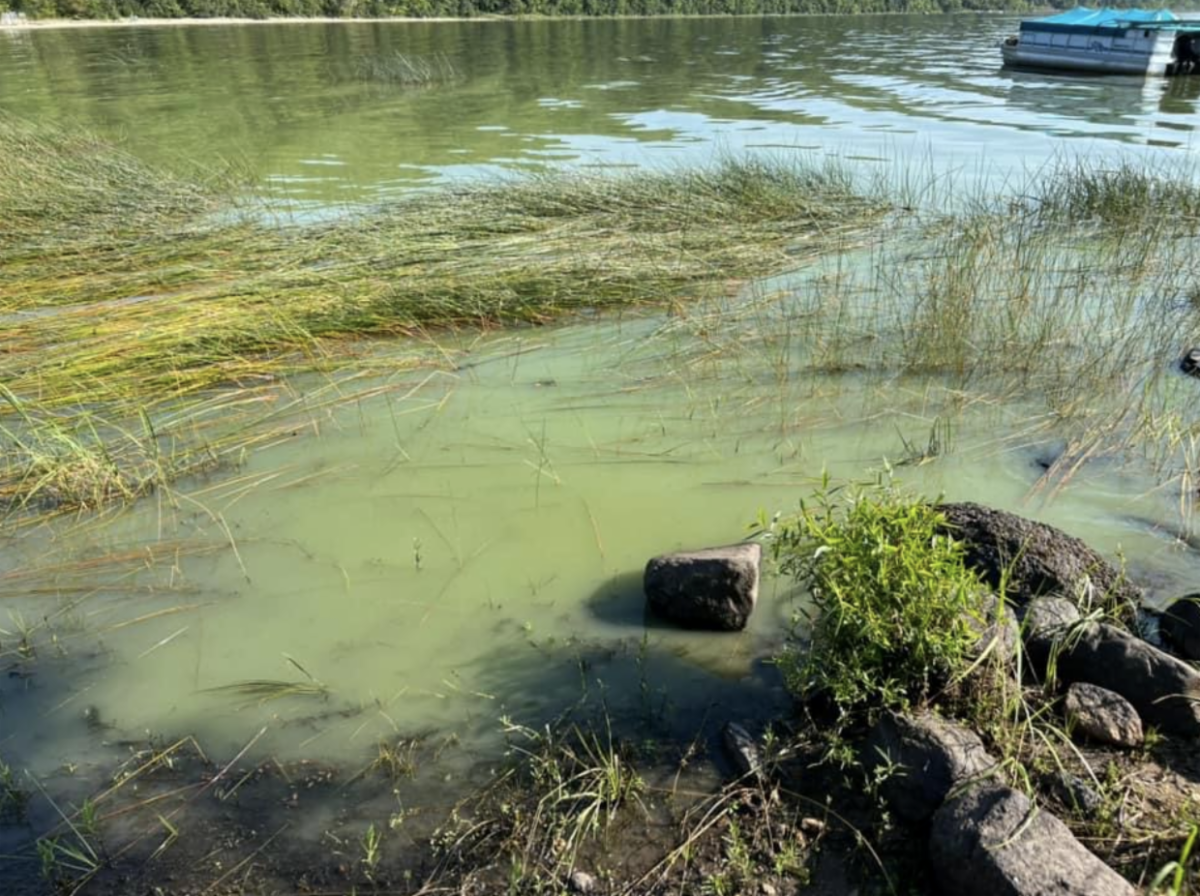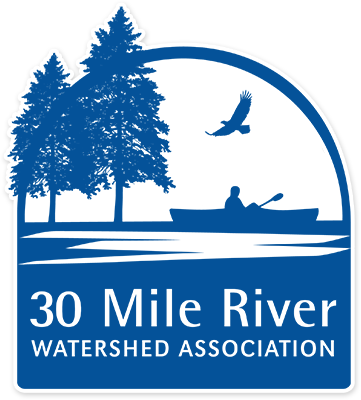Conditions on Androscoggin Lake have now reached “lake-wide algal bloom” status, with the most recent Secchi Disk Transparency (water clarity) reading taken on 9/7 at just 1.5 meters. The state of Maine defines the threshold for a “lake-wide algal bloom” at 2 meters and a “harmful algal bloom” (or HAB) at 1 meter of water clarity.
The dominant type of algae causing this bloom is a species of cyanobacteria called Dolichospermum. This is the most common bloom-forming species in Maine lakes, and is the same type of cyanobacteria responsible for the blooms in 2021 and 2022. Under certain conditions, this type of cyanobacteria can release toxins that are harmful to animals and humans. The reasons cyanobacteria produce toxins is not well understood, and standard monitoring techniques cannot predict when a bloom has toxins in it. Please refer to this Maine DEP webpage for more information and follow these guidelines:

- Do not accidentally ingest or drink lake water during a bloom. Well-maintained domestic water treatment systems may make lake water safe to drink by removing bacteria and parasites, but they are not guaranteed to remove algal toxins.
- If you shower with lake water, keep showers brief because breathing toxins in shower mist could cause health issues.
- Do not swim, water ski, or boat in areas where algae are visible (e.g., pea soup, floating mats, scum layers, etc.), where water is discolored, or where musty odors are present.
- Rules of thumb: if you are standing in water chest deep (4-5 feet ) and you can’t see your toes because the water is so green, you should get out; if you are looking into water that is 4-5 feet deep and can’t see the bottom of the lake because the water is so green, you should not to go in.
- Because algal scums along the shoreline have the highest concentrations of toxins, do not let children play in water that is discolored, where you see mats of algal material, foam, or where musty odors are present. Do not allow pets or livestock to swim or drink water from these areas.
- Rinse off with fresh water and soap if available, as soon as practical if exposed to water that has dense algae present. This will reduce skin exposure for humans and pets.
Please be aware that bloom conditions on your shoreline and throughout the open waters of the lake can change from day to day (or even by the hour) depending on the wind. If water clarity declines below 1 meter at our regular monitoring location, then we do not recommend swimming in any areas of the lake. For the most recent water quality updates, please visit our website.
Photo credit: Sarah Lovejoy
This article was included in 30 Mile’s September 2023 newsletter. To view the full newsletter, click here.
